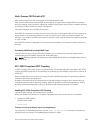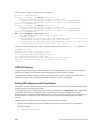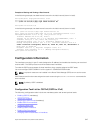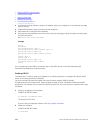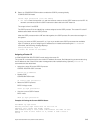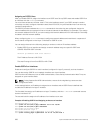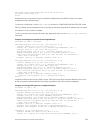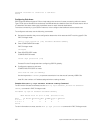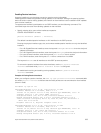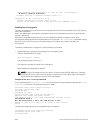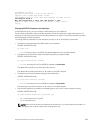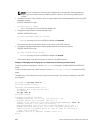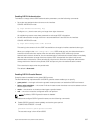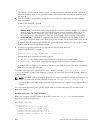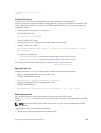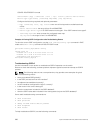
Enabling Passive Interfaces
A passive interface is one that does not send or receive routing information.
Enabling passive interface suppresses routing updates on an interface. Although the passive interface
does not send or receive routing updates, the network on that interface is still included in OSPF updates
sent via other interfaces.
To suppress the interface’s participation on an OSPF interface, use the following command. This
command stops the router from sending updates on that interface.
• Specify whether all or some of the interfaces are passive.
CONFIG-ROUTEROSPF- id mode
passive-interface {default | interface}
The default is enabled passive interfaces on ALL interfaces in the OSPF process.
Entering the physical interface type, slot, and number enables passive interface on only the identified
interface.
– For a 10-Gigabit Ethernet interface, enter the keyword TenGigabitEthernet then the slot/port/
subport
information.
– For a 40-Gigabit Ethernet interface, enter the keyword fortyGigE then the slot/port information.
– For a port channel interface, enter the keywords port-channel then a number.
– For a VLAN interface, enter the keyword vlan then a number from 1 to 4094.
The keyword default sets all interfaces on this OSPF process as passive.
To remove the passive interface from select interfaces, use the no passive-interface
interface command while passive interface default is configured.
To enable both receiving and sending routing updates, use the no passive-interface
interface command.
Example of Viewing Passive Interfaces
When you configure a passive interface, the show ip ospf process-id interface command adds
the words passive interface to indicate that the hello packets are not transmitted on that interface
(shown in bold).
Dell#show ip ospf 34 int
TenGigabitEthernet 1/1/1 is up, line protocol is down
Internet Address 10.1.2.100/24, Area 1.1.1.1
Process ID 34, Router ID 10.1.2.100, Network Type BROADCAST, Cost: 10
Transmit Delay is 1 sec, State DOWN, Priority 1
Designated Router (ID) 10.1.2.100, Interface address 0.0.0.0
Backup Designated Router (ID) 0.0.0.0, Interface address 0.0.0.0
Timer intervals configured, Hello 10, Dead 40, Wait 40, Retransmit 5
Hello due in 13:39:46
Neighbor Count is 0, Adjacent neighbor count is 0
TenGigabitEthernet 2/1/1 is up, line protocol is down
Internet Address 10.1.3.100/24, Area 2.2.2.2
Process ID 34, Router ID 10.1.2.100, Network Type BROADCAST, Cost: 10
Transmit Delay is 1 sec, State DR, Priority 1
Designated Router (ID) 10.1.2.100, Interface address 10.1.3.100
Backup Designated Router (ID) 0.0.0.0, Interface address 0.0.0.0
Open Shortest Path First (OSPFv2 and OSPFv3)
653



